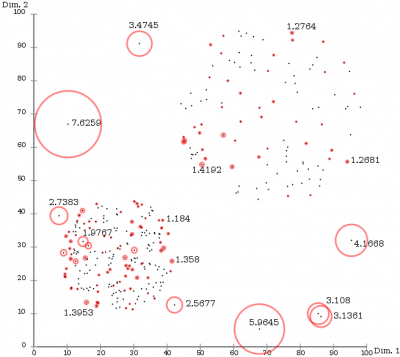Ever since reading Steven Pinker’s scathing review of Malcolm Gladwell’s latest efforts last November, I’ve hesitated to read Gladwell’s third book, Outliers: The Story of Success (2008). But as a teacher, I’ve always wondered about outliers. I’m curious less about why some of my students are so amazing and others aren’t – a phenomenon that can be explained simply by the law of averages – than about what characteristics are common among the superstar students. Is it genes? Is it work ethic? Is it passion, desire, devotion? In Gladwell’s account, otherworldly success turns out to be characterized by all of these things, and at least two more: opportunity and historical circumstance.
By historical circumstance, Gladwell means that some birth months or years can be more fortuitous than others. He explains how and why professional hockey players in Canada and the Czech Republic tend to be born in January, February and March – because January 1st cutoff dates among kids mean that those born earlier in a calendar year have a distinct advantage over those born later in the same year. (They’re bigger and more coordinated, two important qualities among athletes – and a six- or nine-month age difference among young children is huge.) Gladwell also explains how 1953-1956 were the ideal years in which to have been born for the computer revolution that took off in the mid-1970s: you wouldn’t be too old to have a family and established career, and you wouldn’t be too young to still be in middle or high school. As it turns out, Bill Gates, Paul Allen and Steve Ballmer (all of Microsoft fame), as well as Steve Jobs (Apple) and Eric Schmidt (Google), were all born between 1953 and 1956. Coincidence? Hardly, Gladwell says.
Citing the work of neurologist Daniel Levitin, Gladwell also writes about the so-called “10,000-Hour Rule,” the amount of time necessary to invest in something before mastery materializes on the horizon. The superstars of anything, Gladwell argues, get good by dint of their hard work – by outworking everyone else, and not just by a small margin. Passable pianists might practice an hour or two a day growing up, which is clearly a lot more than most people who dabble at the keyboard practice. But professional pianists – those who appear onstage at Carnegie Hall – start practicing five or six hours a day in their teenage years. They’re that good because they practice that much. (You can see why an hour a day won’t cut it at piano if there’s truth to the 10,000-hour rule: if you were to practice just one hour per day from the age of 3 – which is an overly optimistic estimate – you wouldn’t hit 10,000 hours until the age of 30. At that point, it’s far too late to begin making a name for yourself on stage. Mozart, remember, died at age 35, and Franz Schubert died at 31.)
Gladwell reminds his reader that “[h]ard work is a prison sentence only if it does not have meaning,” and he highlights three qualities of work that infuse it with meaning: “autonomy, complexity, and a connection between effort and reward.” If any of these three qualities is missing, it’s a safe bet the work won’t be particularly meaningful. In considering the current debates about linking teacher pay to student performance in the U.S., I’m struck by this last point – a connection between effort and reward. Too often in education, I think, teachers feel there isn’t much connection between the effort they invest and the rewards they reap (in terms of compensation or respect). But I suspect that many of the teachers who are wary of linking pay to performance – as I am, for reasons articulated elsewhere – would say that there are many rewards, mostly intangible, that directly result from the effort they invest. The unexpected “thank-you” note from a former student is my personal favorite.
This weekend I’ll blog about a former student of mine who is now starring in the Chicago production of Billy Elliot – he’s an outlier in just about every way, fluent in five languages and a master of both ballet and dance. Oh, and he’s only 12 years old!




